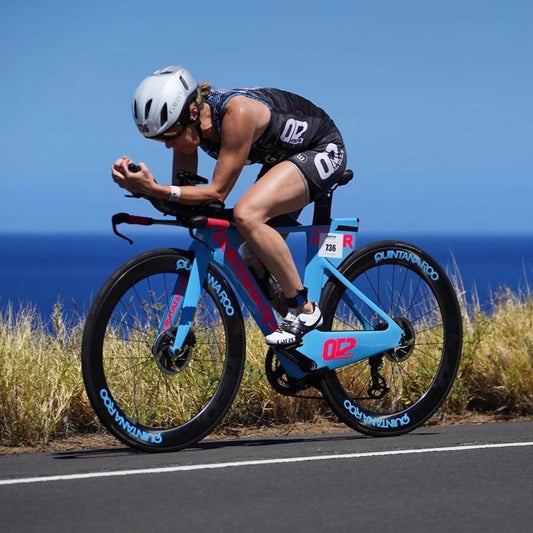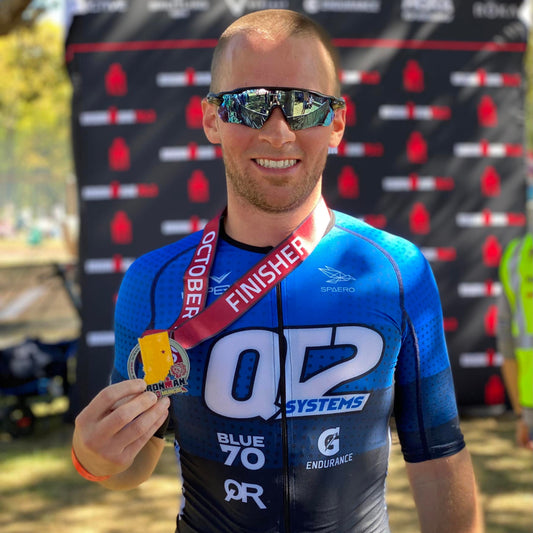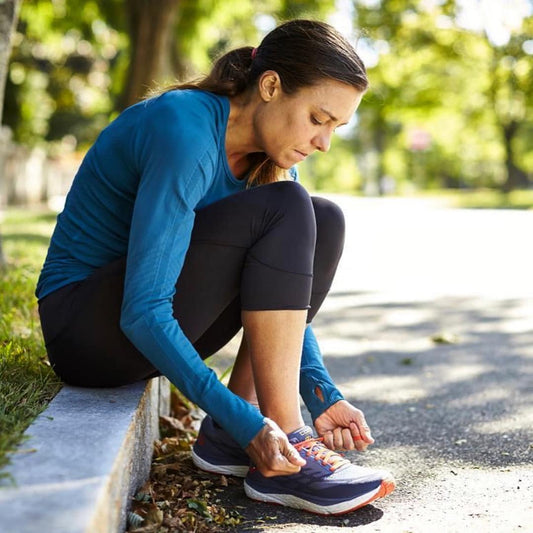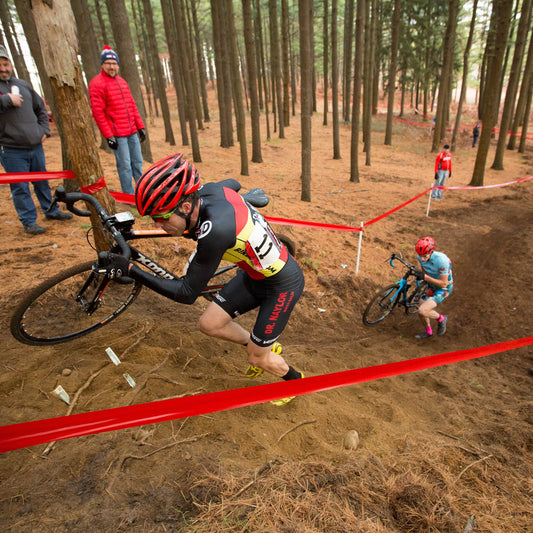Swim Mechanics
Swim mechanics is an area where athletes are subjected to a whole host of opinions, and determining which are valid can become difficult. Having performed underwater video analysis on hundreds of individuals, the great majority of them 50 to 85 minute Ironman swimmers, I feel very confident in identifying the most subtle of issues and how to mitigate them. Similar to my writing on run mechanics, of a few weeks ago, this is geared towards highlighting the most common and critical items related to swim mechanics within the sport of triathlon.
Of the three disciplines in triathlon, swimming is the most difficult AND critical to master the mechanics of. Swimming has infinitely many degrees of freedom, as compared to running and cycling, because of a lack of sturdy connections to firm ground. As an activity's number of degrees of freedom increase, so too does the difficulty to master its mechanics. While running, you typically have one foot in contact with the ground, at all times, providing one less degree of freedom than swimming. Cycling, on the other hand, allows constant contact with the saddle, both hands, and both feet, accounting for five fewer degrees of freedom relative to swimming. As difficult as it is to master the mechanics of running, it is exponentially so in swimming, where there are really no solid contact points, and plenty of opportunities to create your own problems.
I want to first discuss some of the sources of athlete confusion, as related to swimming. Much of this confusion is born from pool-trained swimmers or coaches, focusing on a longer glide phase and lower stroke count. Open water swimming, in choppy waters, requires a strong back end of the stroke, with a follow-through that pushes beyond the hips. Athletes having a long glide phase in their stroke, tend to be slowed by open water chop while in this portion of the stroke, being re-propelled with each pull phase. Unfortunately, a long glide phase typically results in a slow turnover and, therefore, fewer pull phases per minute. Fewer pull phases mean fewer opportunities at forward motion, because of not being re-propelled through the water. Based on these facts, rough open water swims require a higher turnover than their pool-based counterparts.
The above can be evidenced by collegiate pool swimmers who see a major de-couple, relatively speaking, between their pool and open water swim times. Although their graceful glide and strong front-end propulsion results in fast and efficient pool swimming, once offered to the unrelenting chop of the open water, these attributes are quickly minimized. This can be especially frustrating for those who race at the Professional level, come from a swimming background, and typically crush their competition in the pool. Come race day, with mass starts, and bodies in front, behind, on either side, and sometimes on top of you, the front end is the first part of the swim stroke that gets lost in the flurry. With people and feet occupying the space where a nice, long, and gliding swim stroke might occur, it becomes nearly impossible to get a strong catch and pull within the front quadrant of the stroke. This leaves the mid to back end of the stroke as the critical piece for maintaining any forward momentum. Since the back end of the stroke and follow-through are protected, no matter how crowded the swim is, it only makes sense to apply a strong focus of our attention here, for top-level triathlon swimming.
These two points explain why pool-born swimmers can be very graceful and fast in the pool, but may have a good deal of difficulty translating this in-pool speed to the open water. It is the front-end focused swimmers, having a long glide, strong catch, and low turnover/cadence who are most efficient in calm, smooth, non-crowded waters. However, this same group is often out swim, time and time again in the open water by the high turnover crowd, who thrashes through the water with a strong back end to their stroke.
One of the most frustrating aspects for swimmers with poor mechanics is that many spend countless hours in the pool, swimming hard, 5,000 meter workouts with masters groups, but fail to make any significant progress in their open water swim speed. This equates to a misappropriation of the athlete's "stress budget", because a good deal of stress is utilized with little or no return on the investment. In a case like this, the stress spent on swimming is likely better spent cycling and/or running, where speed is less dependent upon mechanics, and gains in fitness are much more likely to directly impact race speed. As such, the athlete may be able to consider backing off on swim intensity, to focus on the mechanical issues that are impeding gains in speed on race day.
Using the above points as a backdrop, let's discuss some of the most common issues that I see in the swimming mechanics of triathletes. We will discuss these in the order of importance, with the numbers in brackets indicating the approximate percentage of athletes who I see exhibiting the issue.
Poor Balance [20%]
This issue is indicated by hips that drop, causing the swimmer to become increasingly vertical in the water. This creates a significant amount of frontal area and hydrodynamic resistance, both of which must be overcome, before the body can make any forward motion. It is very similar to riding your TT bike down the Queen K, in the upright position. This resistance is so large that it is really not worth working on propulsion, or even fitness, until this body position is addressed! A good test, to determine if this is an issue for you, is to swim without doing any kicking, at all. If you struggle to make it through 50 yards, then you likely have some balance issues that are worth addressing. The key to working on balance, for open water swimming, is that once you have improved your in-water balance, stop doing the balance drill sets! These sets tend to reduce stroke cadence, increase glide, and create front-end swimming.
Missed Catch [90%]
I would estimate that only about five percent of triathletes actually have a true catch in their stroke! The catch allows the creation of an anchor for your arm and hand (the paddle), before engaging the lats, in any significant way, to create forward propulsion. Without the catch, engaging the lats and rotating at the shoulder tends to push the water downward and body upward. This exacerbates any existing balance issues, and creates small forward propulsion. This issue can be a double whammy, because it increases resistance AND decreases propulsion.
Poor Timing and/or Low Swim Cadence [50%]
Ideally, your leading arm should be leaving the front quadrant, just as the fingertips of your trailing arm are entering the water. This sort of timing creates more constant propulsion, forward momentum, and leads to an appropriate swim cadence. By swim cadence, I am referring to strokes per minute, NOT strokes per length. The ideal swim cadence is very dependent upon your height and swim speed. Typically, at a pace of 1:50 per 100 yards, an athlete will take between 55 and 65 strokes per minute. At 1:20 pace, we are looking at about 65 to 80 strokes per minute. In each of these, taller athletes should fall at the lower end of these ranges.
Upward Glide/Extension [40%]
Upon entry into the water, the leading arm is extended with an upward glide. This not only increases frontal area, but it also inserts a delay into the swim stroke. This delay can allow the trailing arm to catch up to the leading arm, which creates a timing issue similar to that discussed above. This delay also reduces the number of propulsive phases per minute, and therefore reduces forward momentum in a rough open water swim.
Straight Arm Recovery [20%]
I have heard many coaches say that they don't care what the recovery of their athletes' strokes look like. To be perfectly honest, neither do I, EXCEPT when I see it adversely effect timing, entry, and extension! Unfortunately, this is almost always the case! A straight-armed recovery often results in a straight-armed entry, with the shoulder entering the water first, followed by the elbow, and THEN the hand. As a result, there is a tremendous amount of resistance created, as the arm "rolls" into the water. The time required for this type of recovery often results in the leading arm getting much further along in its stroke, much too soon. This can create a timing issue that is the exact opposite of front quadrant swimming, wasting energy, because maximum propulsion is created as the body is thrust into a flat position.
Weak Back End [80%]
This is quite specific to triathlon, or open water swimming, versus pool swimming. A good back end of the stroke should see the wrist crack, just as the elbow becomes aligned with the body. This is done in an effort to maintain a perpendicular bearing between the palm and the body as the hand moves along the body and completes its follow through. This effectively increases the length of the "propulsive zone" during by maximizing the back end of the stroke. Many swimmers do not crack their wrist, instead pushing upwards on the water with the back of their hand, thus missing an opportunity for continued propulsion.
Cross-Over [30%]
Many swimmers develop a cross-over at some point during their stroke. This will typically occur at either entry/extension, or during mid pull. At entry/extension the forearm is the first thing presented to the water, causing an increase in hydrodynamic resistance. This also tends to produce a zig-zag effect as swimmers move through the water like a snake, again increasing frontal area and hydrodynamic resistance. When viewed from the front, entry and extension should occur directly in front of the shoulder with the index finger and thumb entering first. The palm should then be rotated to horizontal (vs. outward), creating space for the remainder of the body to rotate into.
On the other hand, a cross-over at mid pull reduces the swimmer's effective paddle area, reducing the strength of the pull. Swimmers with this issue tend to either have relatively weak shoulders, or are suffering a cognitive disconnect with the proper mechanics. At mid pull, the palm should be vertical, below the armpit, or just slightly outside of that position.
Over Rotating When Taking a Breath [70%]
Swimmers who show their entire face, when taking a breath, tend to do so by over rotating their head. This is very closely related to a weak back end, as discussed just above. You will often see the palm drive outward, searching for an anchor that the body can use to "push" off of to get that big breath. Rotation of the head should be just enough to gain that breath by biting at the air, with no more than a single goggle lens breaking the water's surface.
Disconnected Shoulders and Hips [15%]
While this issue tends to be less common, it certainly does rear its ugly head now and again. This often presents itself with the hips rotating well before the shoulders. This decreases the body's ability to be well streamlined. From a side-looking view, the shoulders and hips should be connected, as if one. When the hips rotate, so too should the shoulders. When the shoulders rotate, so too should the hips. They are all interconnected!
Strength Limiters [15%]
Relatively low BMI athletes run the risk of being strength limited, in the water, from both a propulsive and mechanics standpoint. Many swimmers struggle to produce an appropriate cadence, because they lack the lat strength to pull through the water quickly enough. It can also be the case that weak shoulders will prevent the athlete from holding a good arm position at mid pull, creating the cross-over effect discussed above.
Why focus on the negative? Now that we have discussed the most common and impactful swim deficiencies, let's talk about the measures that we can take to fix them! Let me begin by sharing a couple of methods to identify stroke mechanics, that may be handy, when underwater video analysis is not readily available.
Golf
I like to use this as a metric to measure streamlining and body balance. The Golf test is performed by swimming 50-yards, and recording your time, in seconds, and the total number of strokes it took. Take the sum of these two numbers, and that is your score. Like the sport of golf, the lower the score, the better. A score that is above 65, for taller athletes, and 75, for shorter athletes, is typically indicative of the need for work with balance drill sets, to improve streamlining.
100 No Kick, 50 Kick
This test helps identify propulsive needs. This is carried out by swimming a 100-yard TT without kicking at all, followed two minutes later by a kick only 50-yard TT, using a kick board. Your time for the 100-yards should then be divided by your time for the 50-yards. If this score is outside of the 1.50-1.70 range, then you should either be working more on your kick propulsion, or your upper body propulsion (i.e., arm position, catch, pull, follow-through, etc). A ratio that is greater than 1.7 is indicative of relatively weak upper body propulsion. A ratio that is lower than 1.5 may point towards a weaker kick.
I rely heavily on the following drill sets to compensate for the issues that we have discussed up to this point. Whether a swimmer's particular issue is identified using the above test metrics or by way of underwater video analysis, these are extremely effective measures that can improve your open water swim speed.
The TI (Total Immersion) Family of Drills
This series of drills mainly addresses balance and streamlining issues. For these issues, there is nothing better! But, once your balance issues are fixed, these drills should be avoided, because they tend to slow swim cadence, and increase front end glide.
If you have: Poor Balance, Straight Arm Recovery, Cross-Over, and/or Disconnected Shoulders and Hips
Fist/Free
This drill is done by swimming 100-yards, the first 50-yards with closed fists, and the second 50-yards with open hands. This helps to improve the catch phase of your stroke, by making you very conscious of your arm and hand positions, following the fist lengths.
If you have: Missed Catch
Aerobic Paddles
This helps to improve swimming-specific strength and the catch phase. Using paddles in an aerobic manner, similar to the 50 fist/50 free drill, forces swimmers to become more aware of their hand positions, through the entirety of their stroke.
If you have: Missed Catch, Weak Back End, and/or Strength Limiters
Ankle Bands
The use of ankle bands shut off a swimmer's kick, forcing them to balance their body in order to create a more productive pull for forward motion. Forward velocity helps to create balance, and is a function of good mechanics. For this reason, this drill is very effective for most triathletes, as it addresses almost all of the deficiencies that we have already discussed.
If you have: ANY of the above issues!
Tabatas
Tabata intervals are a great tool for mechanics, to help improve turnover. These can be done once or twice each week by sprinting 25-yards, while focusing on high stroke turnover, followed by 10 seconds, and repeated 8 to 10 times. Within a single workout, this can be done for two sets of 8 to 10 repetitions, with two minutes between each.
If you have: Poor Timing and/or Low Swim Cadence
Single Arm Swimming
Single arm swimming is the number one way to connect a swimmer's hips to their shoulders. This drill is done with one arm out in front, while stroking with the other arm. Once this is mastered, the arm that is not stroking can be held at the swimmer's side.
If you have: Disconnected Shoulders and Hips
Swim Cords
Swim cord routines are an excellent way for swimmers to help ingrain good arm position, and the elusive high elbow. It is always easier to work on these items with the consistency of dry land, than in the multi-variable environment of the water. Swim cords also help to target potential strength limiters in swimmers with relatively low BMI.
If you have: Missed Catch, Weak Back End, Strength Limiters
Cognitive Thinking
Believe it or not, cognitive thought can address each of the above issues! All of the drill work in the world is useless, if you are not thinking about your swim mechanics with each and every stroke. For example, thinking "fingers tips down, wrist aligned", early in your swim stroke can help to create a higher elbow, and faster cadence.
If you have: ANY of the above issues!
Vertical Kicking and Fin Work
Vertical kicking and fin work are great ways to improve an athlete's kick propulsion, and focus on "hiding the kicks behind the hips". For those with very poor kicking ability, vertical kicking in the deep end for 1:00 sets, is a great way to generate more kick propulsion that originates from the hips. This can be done with a kick board in your hands, slowly moving it above your head as you progress. After three sets of 1:00 can be maintained with the board above your head, it is time to move onto a bit of swimming with the fins, which help the swimmer more effectively feel their kick.
If you have: A 100 No Kick, 50 Kick ratio that is below the 1.50 threshold.
Pull Buoy Swimming
Focused aerobic pull buoy swimming is a great way to shut off the kick, and allow you to focus on many of the upper-body related limiters, identified above. This is especially beneficial for any identifiable body rotation limiters.
If you have: ANY issue other than Poor Balance!
If you are looking for an efficient and comfortable way to swim in training and racing, focus on the front end, a low stroke count, and long glide. If you are looking to lead the swim portion of a triathlon, focus on a strong back end, and high turnover, both of which still require good balance in the water.
Different swimming objectives require different training techniques and mechanical demands. So, when receiving swim advice or looking for a coach, make sure that you clarify the type of racing that you are looking to do, and make sure that the advice matches your specific objectives.
-Jesse





